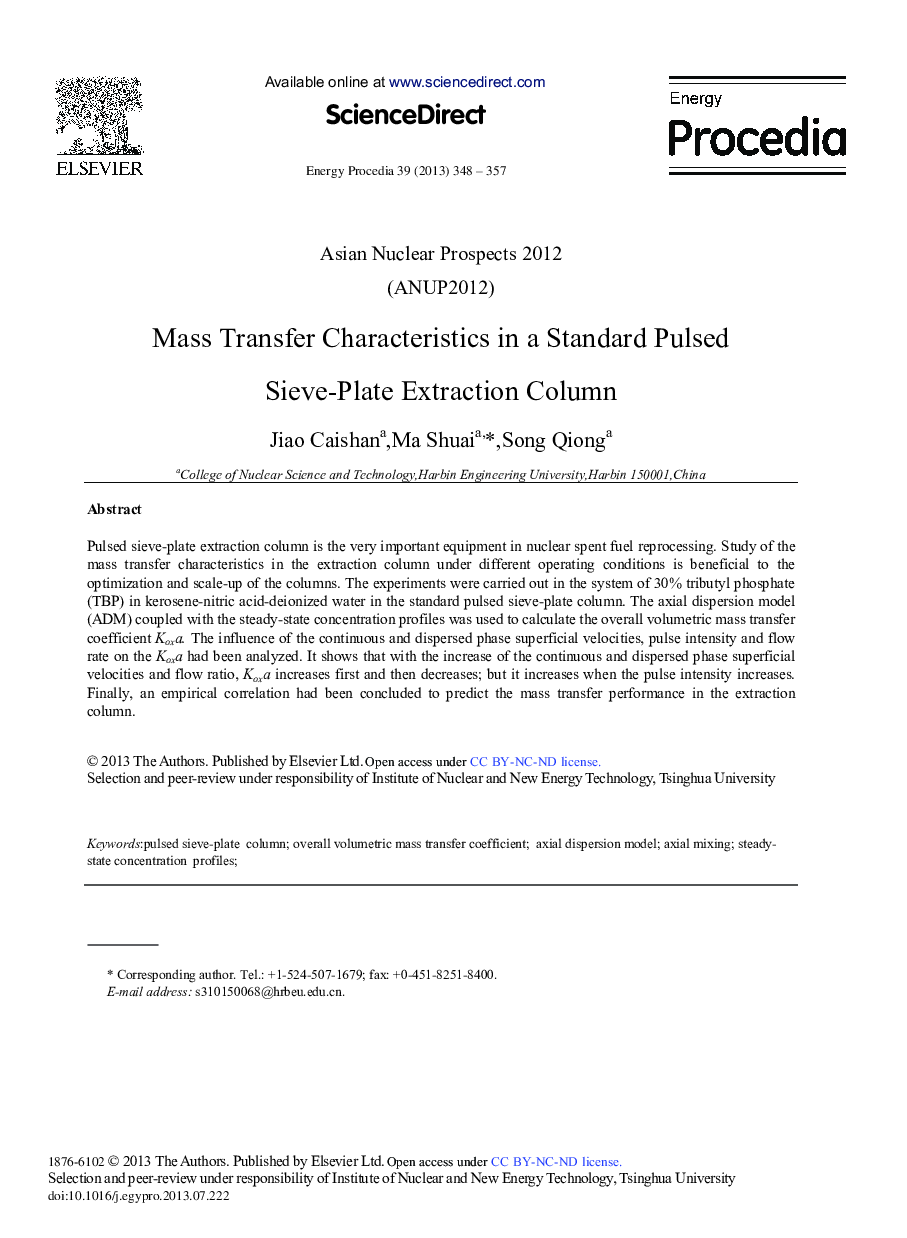| Article ID | Journal | Published Year | Pages | File Type |
|---|---|---|---|---|
| 1512401 | Energy Procedia | 2013 | 10 Pages |
Pulsed sieve-plate extraction column is the very important equipment in nuclear spent fuel reprocessing. Study of the mass transfer characteristics in the extraction column under different operating conditions is beneficial to the optimization and scale-up of the columns. The experiments were carried out in the system of 30% tributyl phosphate (TBP) in kerosene-nitric acid-deionized water in the standard pulsed sieve-plate column. The axial dispersion model (ADM) coupled with the steady-state concentration profiles was used to calculate the overall volumetric mass transfer coefficient Koxa. The influence of the continuous and dispersed phase superficial velocities, pulse intensity and flow rate on the Koxa had been analyzed. It shows that with the increase of the continuous and dispersed phase superficial velocities and flow ratio, Koxa increases first and then decreases; but it increases when the pulse intensity increases. Finally, an empirical correlation had been concluded to predict the mass transfer performance in the extraction column.
